6.6 Human Responses to High Altitude

High and Hypoxic
This mountain scene of Machu Picchu in the Peruvian Andes is a sight to behold. Lurking behind the beauty of this and some other mountain ranges, however, is a potentially deadly threat to the human organism: high-altitude hypoxia. Hypoxia is literally a lack of oxygen. It occurs to varying degrees at altitudes higher than about 2,500 metres above sea level. Yet despite the high altitude of the location shown in Figure 6.6.1, it is very evident that humans have been thriving in this environment for long periods of time; in fact, Machu Picchu was most likely built in the mid 1400s. Modern day peoples live in high altitude locations all over earth where hypoxia may occur, including the Himalaya Mountains in Asia, the Ethiopian Highlands in Africa, and the Rocky Mountains in North America.
Why Hypoxia Occurs at High Altitudes
Although the percentage of oxygen in the atmosphere is the same at high altitudes as it is at sea level, the atmosphere is less dense at high altitudes. This means that the molecules of oxygen (and other gases) in the air are more spread out, so a given volume of air contains fewer oxygen molecules. This results in lower air pressure at high altitude. Air pressure decreases exponentially as altitude increases, as shown in the graph below (Figure 6.6.2).
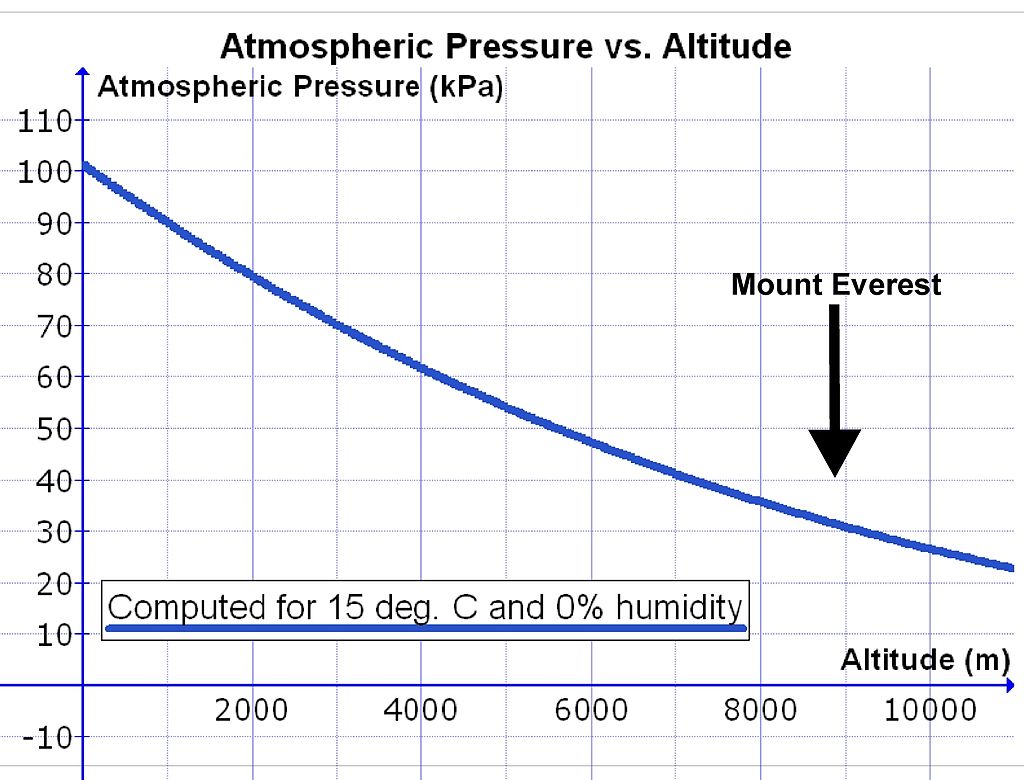
At sea level, air pressure is about 100 kPa. At this air pressure, the air is dense and oxygen passes easily from the air in the lungs through cell membranes into the bloodstream. This is because concentration affects diffusion — the higher the concentration of oxygen in the air we breath, the more it will diffuse into our blood. It is likely we evolved at or near sea level altitudes, so it is not surprising that the human body generally performs best at this altitude. However, as air pressure decreases at high altitudes, it becomes more difficult for adequate oxygen to pass into the bloodstream, and blood levels of oxygen start to fall.
At 2,500 metres above sea level, air pressure is only about 75 per cent of that at sea level, and at five thousand metres, air pressure is only about 50 per cent of the sea level value. The latter altitude is about the altitude of the Mount Everest Base Camp and of the highest permanent human settlement (La Rinconada in Peru, pictured in Figure 6.6.3). Altitudes above 2,500 metres generally require acclimatization or adaptation to prevent illness from hypoxia. Above 7,500 metres, serious symptoms of hypoxia are likely to develop. Altitudes above eight thousand metres are in the “death zone.” This is the zone where hypoxia becomes too great to sustain human life. The summit of Everest, with an altitude of 8,848 metres, is well within the death zone. Mountain climbers can survive there only by taking in extra oxygen from oxygen tanks and not staying at the summit very long.
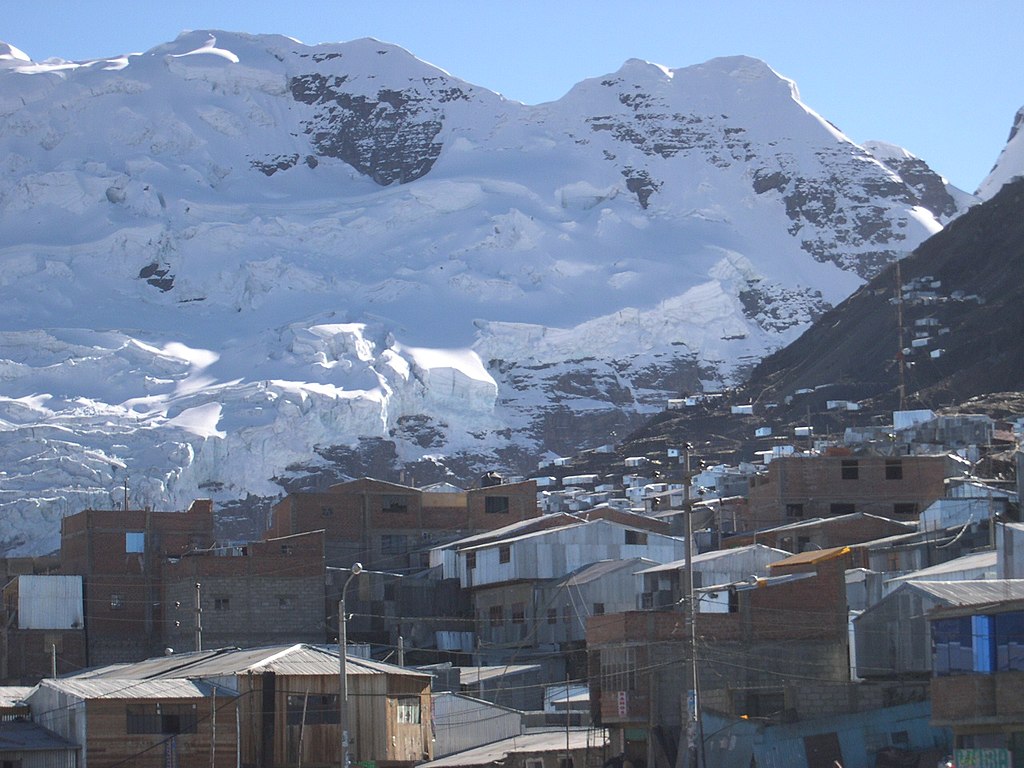
Physiological Effects of Hypoxia
When a lowlander first goes to an altitude above 2,500 metres, the person’s blood oxygen level starts to fall. The immediate responses of the body to hypoxia are not very efficient, and they place additional stress on the body. The main changes are an increase in the breathing rate (hyperventilation) and an elevation of the heart rate. These rates may be as much as double their normal levels, and they may persist at high levels, even during rest. While these changes increase oxygen intake in the short term, they also place more stress on the body. For example, hyperventilation causes respiratory alkalosis, in which carbon dioxide levels in the blood become too low. The increased heart rate places stress on the cardiovascular system and may be especially dangerous for someone with an underlying heart problem.
The first symptoms of hypoxia the lowlander is likely to notice is becoming tired and out of breath when performing physical tasks. Appetite is also likely to decline, as nonessential body functions are shut down at the expense of maintaining rapid breathing and heart rates. Other symptoms are also likely to develop, such as headache, dizziness, distorted vision, ringing in the ears, difficulty concentrating, insomnia, nausea, and vomiting. These are all symptoms of high altitude sickness.
More serious symptoms may also develop at high altitudes. Fluid collects in the lungs (high altitude pulmonary edema, or HAPE) and in the brain (high altitude cerebral edema, or HACE). HACE may result in permanent brain damage, and both HAPE and HACE can be fatal. The higher the altitude, the greater the likelihood of these serious high altitude disorders occurring, and the greater the risk of death.
Acclimatization to High Altitude

If a lowlander stays at high altitude for several days, the body starts to respond in ways that are less stressful. These responses are the result of acclimatization to high altitude. Additional red blood cells are produced and the tiniest blood vessels, called capillaries, become more numerous in muscle tissues. The lungs also increase slightly in size, as does the right ventricle of the heart, which is the heart chamber that pumps blood to the lungs. All of these changes make the processes of taking in oxygen and transporting it to cells more efficient.
It might occur to you that these changes with acclimatization would improve fitness and performance in athletes, and you would be right. The same changes that help the body cope with high altitude increase fitness and performance at lower altitudes. That’s why athletes often travel to high altitudes to train, and then compete at lower altitudes. Figure 6.6.4 shows Olympic athletes training for long distance running at the Swiss Olympic Training Base in St. Moritz, located in the Swiss Alps.
Full acclimatization to high altitude generally takes several weeks. The higher the altitude, the longer it takes. Even when acclimatization is successful and symptoms of high altitude sickness mostly abate, the lowlander may not be able to attain the same level of physical or mental performance as is possible at lower altitudes. When an altitude acclimatized individual returns to sea level, the changes that occurred at high altitude are no longer needed. The body reverts to the original, pre-high-altitude state in a matter of weeks.
Genetic Adaptations to High Altitude
Well over 100 million people worldwide are estimated to live at altitudes higher than 2,500 metres above sea level. In Table 6.6.1, you can see how these people are distributed in the highest altitude regions around the globe.
Table 6.6.1
Human Populations Residing in High Altitude Regions
| Human Populations Residing in High Altitude Regions | |
| High Altitude Region | Human Population |
| Himalaya-Hindukush-Pamir Ranges, Tibetan Plateau (Asia) | 78,000,000 |
| Andes Mountains (South America) | 35,000,000 |
| Ethiopian Highlands (Africa) | 13,000,000 |
| Rocky Mountains (North America) | 300,000 |
Some Indigenous populations of Tibet, Peru, and Ethiopia have been living above 2,500 metres for hundreds of generations and have evolved genetic adaptations that protect them from high altitude hypoxia. In these populations, natural selection has brought about irreversible, genetically-controlled changes that adapt them to high altitude conditions. As a result, they can live permanently at high altitudes without any, or with only minor, ill effects — even though they are constantly exposed to a level of oxygen that would cause high altitude sickness in most other people. Interestingly, different adaptations evolved in different regions in response to the same stress.
High Altitude Adaptations in Tibetan Highlanders
Highland populations in Tibet, such as the famous Sherpas who serve as Himalaya Mountain guides (see Figure 6.6.5), have lived at high altitudes for only about three thousand years. Their adaptations to high altitude include an increase in the rate of breathing even at rest without alkalosis occurring, and an expansion in the width of the blood vessels (both capillaries and arteries) that carry oxygenated blood to the cells. These changes allow them to carry more oxygen to their muscles and have a higher capacity for exercise at high altitude. Their adaptations to high altitude occurred very rapidly in evolutionary terms and are considered to be the most rapid process of phenotypically observable evolution in humans.
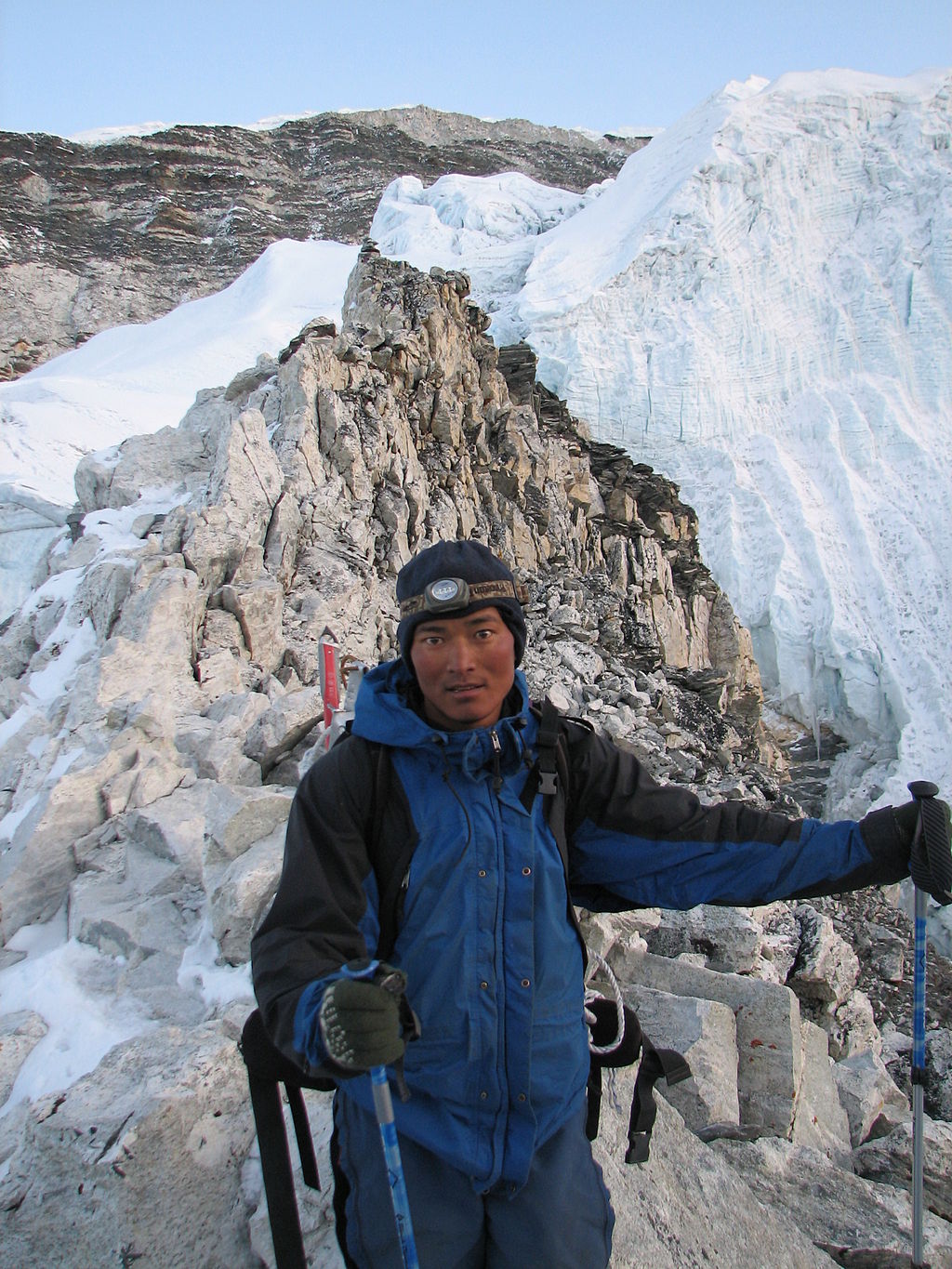
High Altitude Adaptations in Andean Highlanders
Andean highlanders, such as Quechua Native Americans (see Figure 6.6.6), have been living at high altitudes for about 11 thousand years. Their genetic adaptations to high altitude are different than the Tibetan adaptations. They include greater red blood cell volume and increased concentration of hemoglobin, the oxygen-carrying protein that is the main component of red blood cells. These changes allow somewhat higher levels of oxygen to circulate in the blood without increasing the rate of breathing. Compared with other long-term residents at high altitudes, Andean highlanders are the least adapted and most likely to experience high altitude sickness.
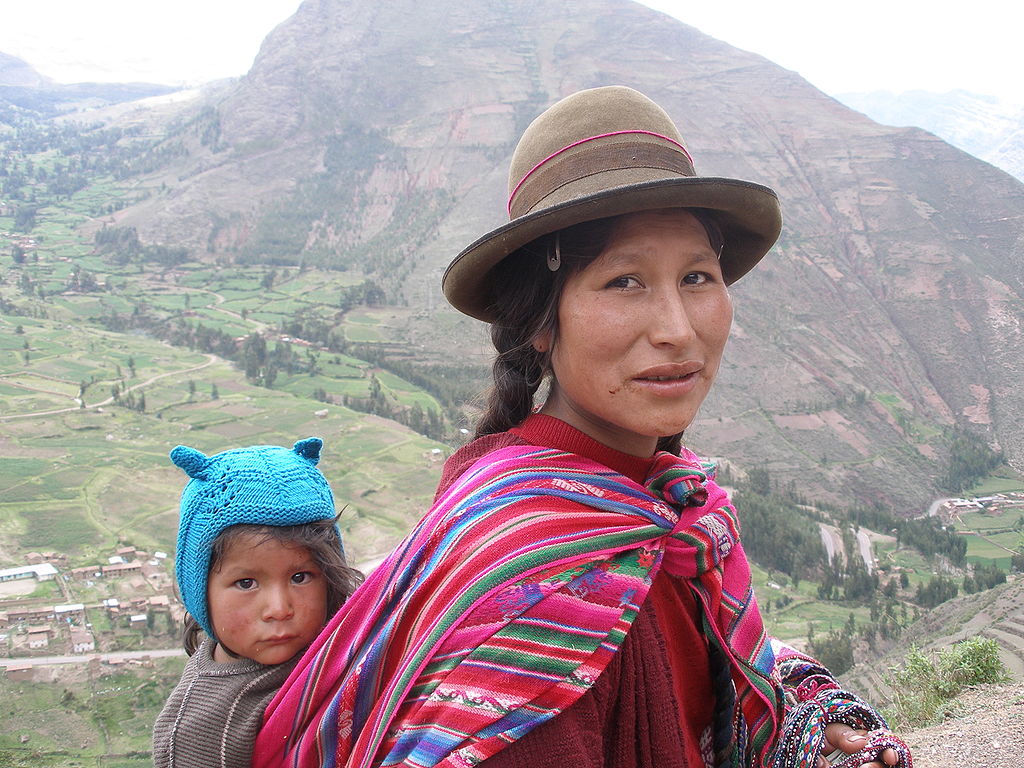 |
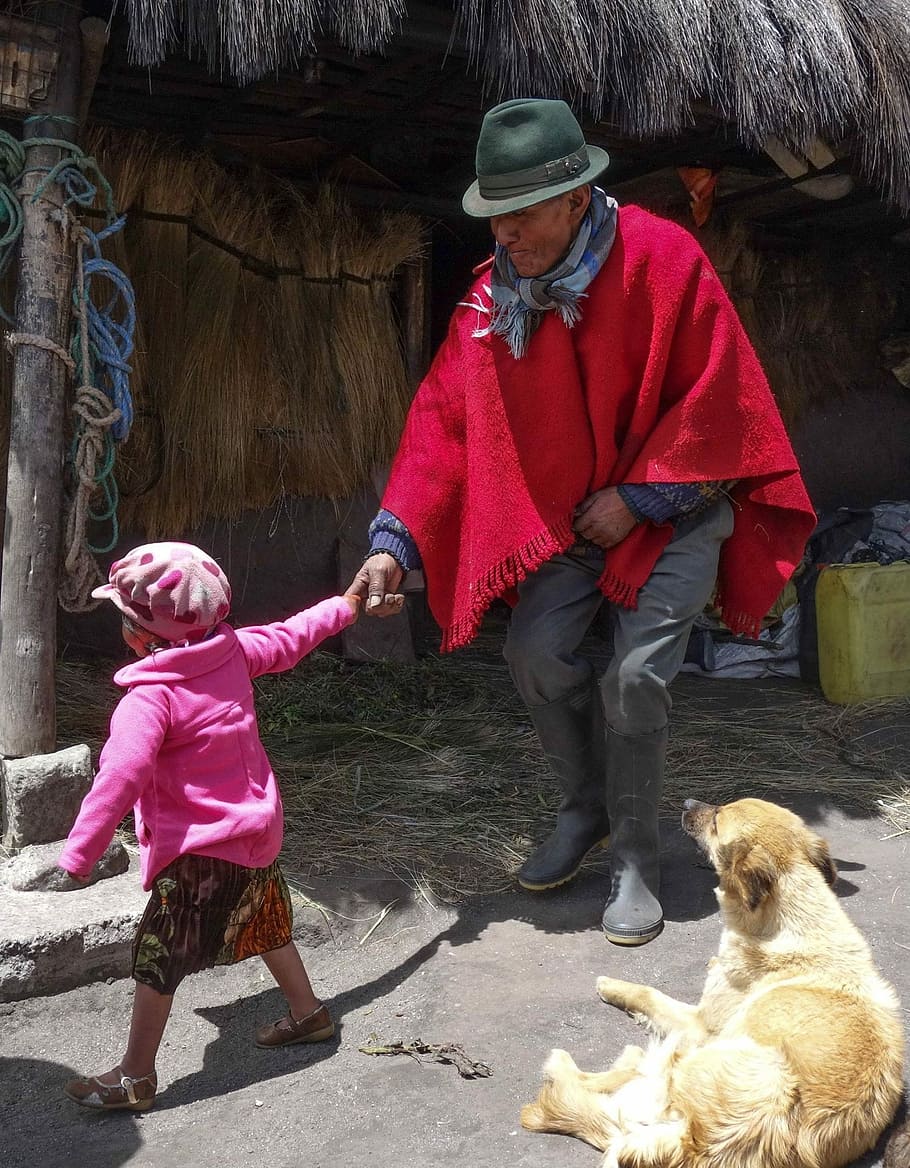 |
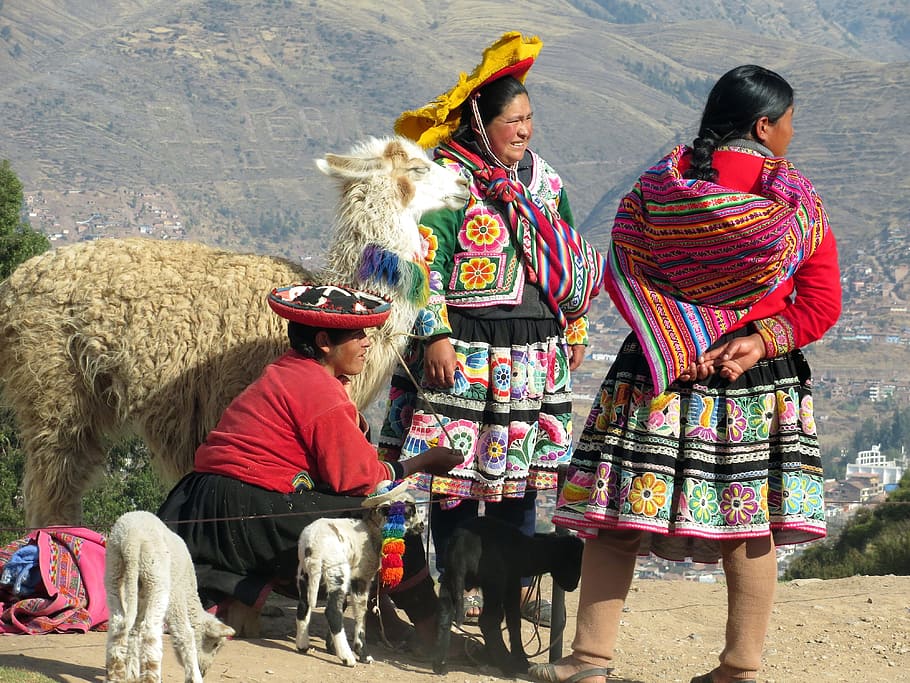 |
| Figure 6.6.6 Quechua Native Americans in the Peruvian Andes. | ||
High Altitude Adaptations in Ethiopian Highlanders

The Ethiopian Highlands (Figure 6.6.7) are high enough to have brought about genetic adaptations in long-term residents. Populations of Ethiopian Highlanders have lived above 2,500 metres for at least five thousand years, and above two thousand metres for as long as 70 thousand years. Many Ethiopian Highlanders today live at altitudes greater than 3,000 metres. However, Ethiopian Highland populations do not appear to have evolved the adaptations that characterize either Tibetan highlanders or Andean highlanders. They do not exhibit the hemoglobin changes or vascular changes of these other highland populations, but they do have greater arterial blood oxygen saturation. Research on Ethiopian adaptations to high altitude has just begun and is still very limited, but they appear to have a unique pattern of adaptation.
6.6 Summary
- At high altitudes, humans face the stress of hypoxia, or a lack of oxygen. Hypoxia occurs at high altitude because there is less oxygen in each breath of air and lower air pressure, which prevents adequate absorption of oxygen from the lungs.
- Initial responses to hypoxia include hyperventilation and elevated heart rate, but these responses are stressful to the body. Continued exposure to high altitude may cause high altitude sickness, with symptoms such as fatigue, shortness of breath, and loss of appetite. At higher altitudes, there is greater risk of serious illness.
- After several days at high altitude, acclimatization starts to occur in someone from a lowland population. More red blood cells and capillaries form and other changes occur. Full acclimatization may take several weeks. Returning to low altitude causes a reversal of the changes to the pre-high-altitude state in a matter of weeks.
- Well over 100 million people live at altitudes higher than 2,500 metres above sea level. Some Indigenous populations of Tibet, Peru, and Ethiopia have been living above 2,500 metres for thousands of years and have evolved genetic adaptations to high altitude hypoxia.
- Different high altitude populations have evolved different adaptations to the same hypoxic stress. Tibetan highlanders, for example, have a faster rate of breathing and wider arteries, whereas Peruvian highlanders have larger red blood cells and a greater concentration of the oxygen-carrying protein hemoglobin.
6.6 Review Questions
- Define hypoxia.
- Why does hypoxia occur at high altitudes?
- Describe the body’s immediate response to hypoxia at high altitude.
-
- What is high altitude sickness, and what are its symptoms?
- What changes occur during acclimatization to high altitude?
- Where would you expect to find populations with genetic adaptations to high altitude?
- Discuss variation in adaptations to high altitude in different high altitude regions.
- Why do you think that adaptations to living at high altitude are different in different regions of the world?
- Using human responses to high altitude as an example, explain the difference between acclimatization and adaptation.
- Why are most humans not well-adapted to living at high altitudes?
- If a person that normally lives at sea level wants to climb a very high mountain, do you think it is better for them to move to higher elevations gradually or more rapidly? Explain your answer.
6.6 Explore More
How People Have Evolved to Live in the Clouds, SciShow, 2019.
The Olympic Altitude Advantage, AsapSCIENCE, 2012.
Alternative Treatment of Altitude Sickness: Manual Medicine | Kelly Riis-Johannessen | TEDxChamonix, TEDx Talks, 2019.
Attributions
Figure 6.6.1
Machu Pichu by Adriana Aceves on Unsplash is used under the Unsplash License (https://unsplash.com/license).
Figure 6.6.2
Altitude_and_air_pressure_&_Everest by Cruithne9 on Wikimedia Commons is used under the CC BY-SA 4.0 (https://creativecommons.org/licenses/by-sa/4.0/deed.en) license.
Figure 6.6.3
La_Rinconada_Peru by Hildegard Willer on Wikimedia Commons is used under the CC BY-SA 4.0 (https://creativecommons.org/licenses/by-sa/4.0/deed.en) license.
Figure 6.6.4
Swiss_Olympic_training_base by Christof Sonderegger von Photoplus.ch on Wikimedia Commons is used under the CC BY-SA 3.0 (https://creativecommons.org/licenses/by-sa/4.0/deed.en) license.
Figure 6.6.5
Sherpa guide by McKay Savage on Wikimedia Commons is used under a CC BY 2.0 (https://creativecommons.org/licenses/by/2.0/deed.en) license.
Figure 6.6.6
- Quechua Mother and Child by Thomas Quine on Flickr is used under a CC BY 2.0 (https://creativecommons.org/licenses/by/2.0/) license.
- Tags: Local Community Quechua Indians Grandpa [photo] by Basinatura on Pixabay is used under the Pixabay License (https://pixabay.com/fr/service/license/).
- Tags: Peruvian Traditional Costume Cuzco Andes Peru by SoleneC1 on Pixabay is used under the Pixabay License (https://pixabay.com/fr/service/license/).
Figure 6.6.7
Ethiopian Highlander by Gerald Schömbs on Unsplash is used under the Unsplash License (https://unsplash.com/license).
References
AsapSCIENCE. (2012, July 5). The Olympic altitude advantage. YouTube. https://www.youtube.com/watch?v=wmkO8oWyg8Y&feature=youtu.be
Mayo Clinic Staff. (n.d.). High-altitude pulmonary edema [online article]. MayoClinic.org. https://www.mayoclinic.org/diseases-conditions/pulmonary-edema/multimedia/img-20097483
SciShow. (2019, May 23). How people have evolved to live in the clouds. YouTube. https://www.youtube.com/watch?v=elOn5ZYg5fc&feature=youtu.be
TEDx Talks. (2019, March 27). Alternative treatment of altitude sickness: Manual medicine | Kelly Riis-Johannessen | TEDxChamonix. YouTube. https://www.youtube.com/watch?v=aIOaYh9Bkds&feature=youtu.be
Wikipedia contributors. (2020, April 13). High-altitude cerebral edema. In Wikipedia. https://en.wikipedia.org/w/index.php?title=High-altitude_cerebral_edema&oldid=950658590
Created by: CK-12/Adapted by: Christine Miller
What Is Pseudoscience?
Pseudoscience is a claim, belief, or practice that is presented as scientific but does not adhere to the standards and methods of science. True science is based on repeated evidence-gathering and testing of falsifiable hypotheses. Pseudoscience does not adhere to these criteria. In addition to phrenology, some other examples of pseudoscience include astrology, extrasensory perception (ESP), reflexology, reincarnation, and Scientology,
Characteristics of Pseudoscience
Whether a field is actually science or just pseudoscience is not always clear. However, pseudoscience generally exhibits certain common characteristics. Indicators of pseudoscience include:
- The use of vague, exaggerated, or untestable claims: Many claims made by pseudoscience cannot be tested with evidence. As a result, they cannot be falsified, even if they are not true.
- An over-reliance on confirmation rather than refutation: Any incident that appears to justify a pseudoscience claim is treated as proof of the claim. Claims are assumed true until proven otherwise, and the burden of disproof is placed on skeptics of the claim.
- A lack of openness to testing by other experts: Practitioners of pseudoscience avoid subjecting their ideas to peer review. They may refuse to share their data and justify the need for secrecy with claims of proprietary or privacy.
- An absence of progress in advancing knowledge: In pseudoscience, ideas are not subjected to repeated testing followed by rejection or refinement, as hypotheses are in true science. Ideas in pseudoscience may remain unchanged for hundreds — or even thousands — of years. In fact, the older an idea is, the more it tends to be trusted in pseudoscience.
- Personalization of issues: Proponents of pseudoscience adopt beliefs that have little or no rational basis, so they may try to confirm their beliefs by treating critics as enemies. Instead of arguing to support their own beliefs, they attack the motives and character of their critics.
- The use of misleading language: Followers of pseudoscience may use scientific-sounding terms to make their ideas sound more convincing. For example, they may use the formal name dihydrogen monoxide to refer to plain old water.
Persistence of Pseudoscience
Despite failing to meet scientific standards, many pseudosciences survive. Some pseudosciences remain very popular with large numbers of believers. A good example is astrology.
Astrology is the study of the movements and relative positions of celestial objects as a means for divining information about human affairs and terrestrial events. Many ancient cultures attached importance to astronomical events, and some developed elaborate systems for predicting terrestrial events from celestial observations. Throughout most of its history in the West, astrology was considered a scholarly tradition and was common in academic circles. With the advent of modern Western science, astrology was called into question. It was challenged on both theoretical and experimental grounds, and it was eventually shown to have no scientific validity or explanatory power.

Today, astrology is considered a pseudoscience, yet it continues to have many devotees. Most people know their astrological sign, and many people are familiar with the personality traits supposedly associated with their sign. Astrological readings and horoscopes are readily available online and in print media, and a lot of people read them, even if only occasionally. About a third of all adult Americans actually believe that astrology is scientific. Studies suggest that the persistent popularity of pseudosciences such as astrology reflects a high level of scientific illiteracy. It seems that many Americans do not have an accurate understanding of scientific principles and methodology. They are not convinced by scientific arguments against their beliefs.
Dangers of Pseudoscience
Belief in astrology is unlikely to cause a person harm, but belief in some other pseudosciences might — especially in health care-related areas. Treatments that seem scientific but are not may be ineffective, expensive, and even dangerous to patients. Seeking out pseudoscientific treatments may also delay or preclude patients from seeking scientifically-based medical treatments that have been tested and found safe and effective. In short, irrational health care may not be harmless.
Scientific Hoaxes, Frauds, and Fallacies
Pseudoscience is not the only way that science may be misused. Scientific hoaxes, frauds, and fallacies may misdirect the pursuit of science, put patients at risk, or mislead and confuse the public. An example of each of these misuses of science and its negative effects is described below.
The Piltdown Hoax
![Image by By James Howard McGregor [Public domain], via Wikimedia Commons A side profile view of an artists rendition of what the Piltdown Man may have looked like, had he been real.](https://pressbooks.ccconline.org/acchumanbio/wp-content/uploads/sites/152/2023/10/Piltdown-Man-300x285.jpg)
Piltdown Man (see picture left) was a paleontological hoax in which bone fragments were presented as the fossilized remains of a previously unknown early human. These fragments consisted of parts of a skull and jawbone, reported to have been found in 1908 in a gravel pit at Piltdown, East Sussex, England. The significance of the specimen remained the subject of controversy until it was exposed in 1953 as a hoax. It eventually came to light that the specimen consisted of the lower jawbone of an orangutan deliberately combined with skull bones of a modern human. The Piltdown hoax is perhaps the most infamous paleontological hoax ever perpetrated, both for its impact on the direction of research on human evolution and for the length of time between its "discovery" and its full exposure as a forgery.
![Photo by Anrie [CC BY-SA 3.0 (https://creativecommons.org/licenses/by-sa/3.0)], from Wikimedia Commons A replica of the infamous Piltdown skull. The skull is encased in a glass sphere. The replica shows portions of the skull which were bone in white, and the portions of the skull which were inferred in black.](https://pressbooks.ccconline.org/acchumanbio/wp-content/uploads/sites/152/2023/10/Sterkfontein_Piltdown_man-300x294.jpg)
In 1912, the head of the geological department at the British Museum proposed that Piltdown man represented an evolutionary missing link between apes and humans. With its human-like cranium and ape-like jaw, it seemed to support the idea then prevailing in England that human evolution began with the brain. The Piltdown specimen led scientists down a blind alley in the belief that the human brain increased in size before the jaw underwent size reductions to become more like the modern human jaw. This belief confused and misdirected the study of human evolution for decades, and actual fossils of early humans were ignored because they didn't support the accepted paradigm.
The Vaccine-Autism Fraud
You may have heard that certain vaccines put the health of young children at risk. This persistent idea is not supported by scientific evidence or accepted by the vast majority of experts in the field. It stems largely from an elaborate medical research fraud that was reported in a 1998 article published in the respected British medical journal, The Lancet. The main author of the article was a British physician named Andrew Wakefield. In the article, Wakefield and his colleagues described case histories of 12 children, most of whom were reported to have developed autism soon after the administration of the MMR (measles, mumps, rubella) vaccine.
Several subsequent peer-reviewed studies failed to show any association between the MMR vaccine and autism. It also later emerged that Wakefield had received research funding from a group of people who were suing vaccine manufacturers. In 2004, ten of Wakefield's 12 coauthors formally retracted the conclusions in their paper. In 2010, editors of The Lancetretracted the entire paper. That same year, Wakefield was charged with deliberate falsification of research and barred from practicing medicine in the United Kingdom. Unfortunately, by then, the damage had already been done. Parents afraid that their children would develop autism had refrained from having them vaccinated. British MMR vaccination rates fell from nearly 100 per cent to 80 per cent in the years following the study. The consensus of medical experts today is that Wakefield's fraud put hundreds of thousands of children at risk because of the lower vaccination rates and also diverted research efforts and funding away from finding the true cause of autism.
Correlation-Causation Fallacy
Many statistical tests used in scientific research calculate correlations between variables. Correlation refers to how closely related two data sets are, which may be a useful starting point for further investigation. Correlation, however, is also one of the most misused types of evidence, primarily because of the logical fallacy that correlation implies causation. In reality, just because two variables are correlated does not necessarily mean that either variable causes the other.
A few simple examples, illustrated by the graphs below, can be used to demonstrate the correlation-causation fallacy. Assume a study found that both per capita consumption of mozzarella cheese and the number of Civil Engineering doctorates awarded are correlated; that is, rates of both events increase together. If correlation really did imply causation, then you could conclude from the second example that the increase in age of Miss America causes an increase in murders of a specific type or vice versa.
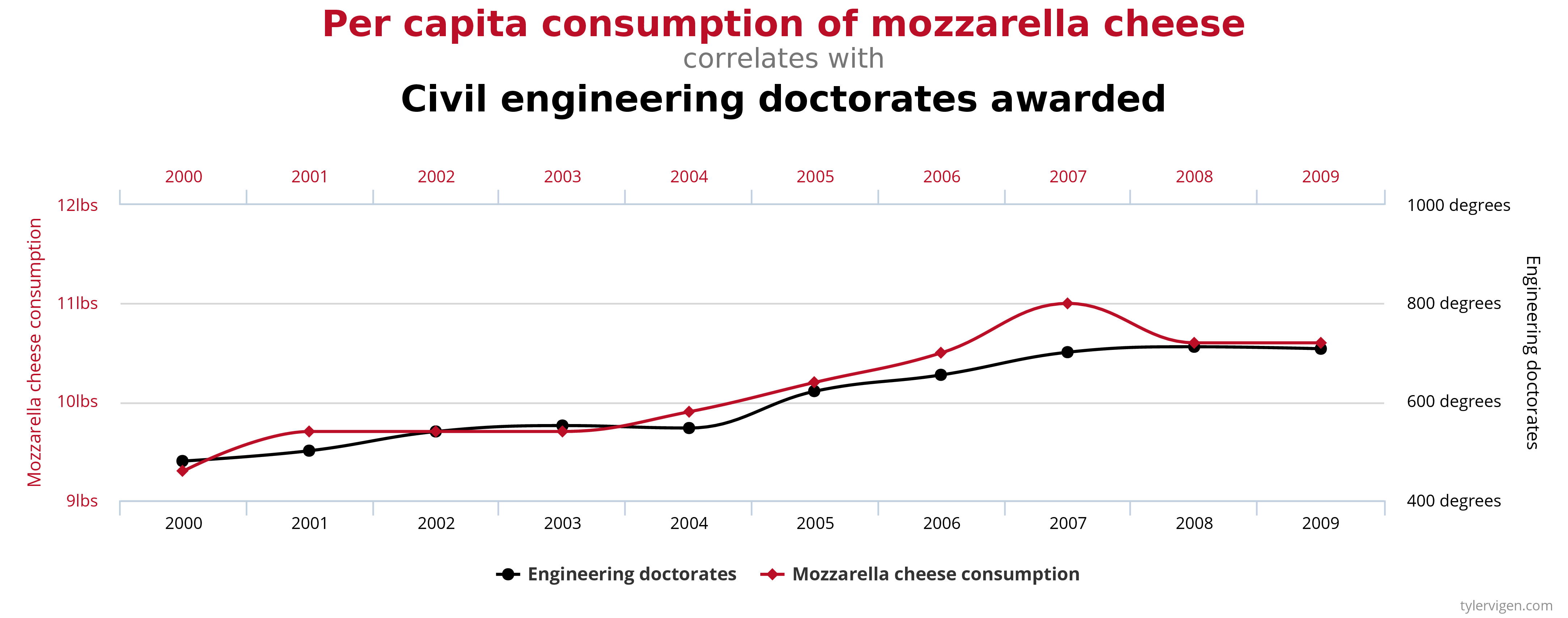
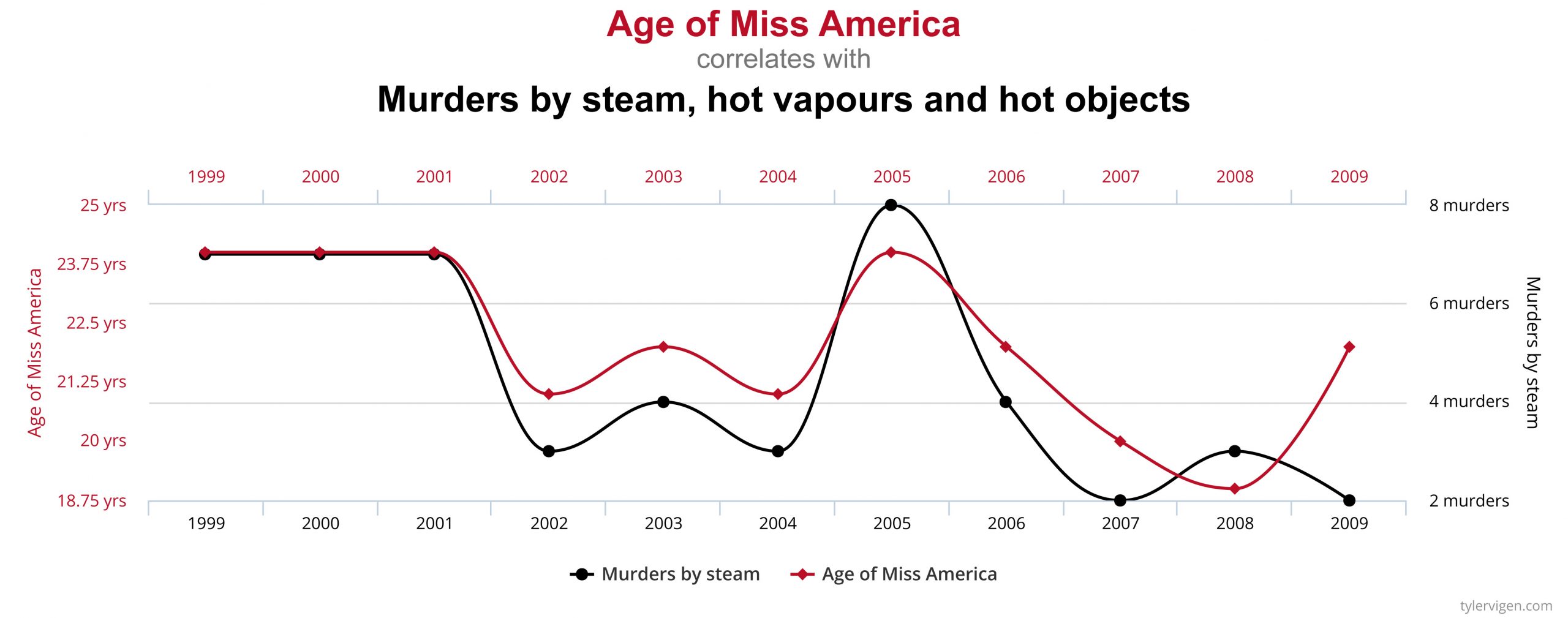
An actual example of the correlation-causation fallacy occurred during the latter half of the 20th century. Numerous studies showed that women taking hormone replacement therapy (HRT) to treat menopausal symptoms also had a lower-than-average incidence of coronary heart disease (CHD). This correlation was misinterpreted as evidence that HRT protects women against CHD. Subsequent studies that controlled other factors related to CHD disproved this presumed causal connection. The studies found that women taking HRT were more likely to come from higher socio-economic groups, with better-than-average diets and exercise regimens. Rather than HRT causing lower CHD incidence, these studies concluded that HRT and lower CHD were both effects of higher socio-economic status and related lifestyle factors.
Check out this “Rough Guide to Spotting Bad Science” infographic from Compound Interest:
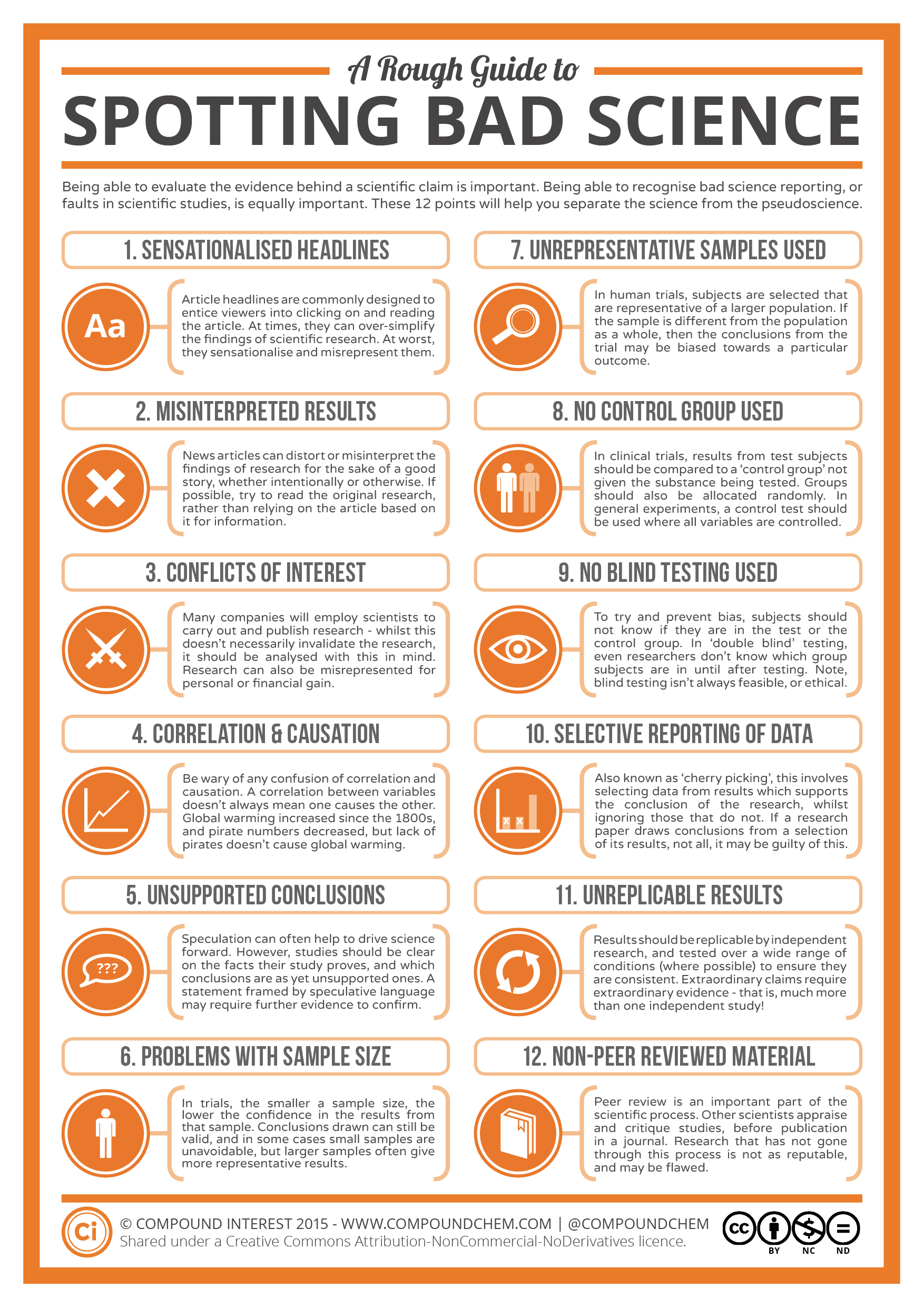
1.7 Summary
- Pseudoscience is a claim, belief, or practice that is presented as scientific, but does not adhere to scientific standards and methods.
- Indicators of pseudoscience include untestable claims, lack of openness to testing by experts, absence of progress in advancing knowledge, and attacks on the motives and character of critics.
- Some pseudosciences, including astrology, remain popular. This suggests that many people do not possess the scientific literacy needed to distinguish pseudoscience from true science, or to be convinced by scientific arguments against them.
- Belief in a pseudoscience such as astrology is unlikely to cause harm, but belief in pseudoscientific medical treatments may be harmful.
- In addition to pseudoscience, other examples of the misuse of science include scientific hoaxes (such as the Piltdown hoax), scientific frauds (such as the MMR vaccine-autism fraud), and scientific fallacies (such as the correlation-causation fallacy).
1.7 Review Questions
- Define pseudoscience. Give three examples.
- What are some indicators that a claim, belief, or practice might be pseudoscience rather than true science?
- Astrology was once considered a science, and it was common in academic circles. Why did its status change from a science to a pseudoscience?
- What are possible reasons that some pseudosciences remain popular even after they have been shown to have no scientific validity or explanatory power?
- List three other ways besides pseudoscience that science can be misused, and identify an example of each.
- Explain how misuses of science may waste money and effort. How can they potentially cause harm to the public?
- Many claims made by pseudoscience cannot be tested with evidence. From a scientific perspective, why is it important that claims be testable?
- What do you think is the difference between pseudoscience and belief?
- If you see a website that claims that an herbal supplement causes weight loss and they use a lot of scientific terms to explain how it works, can you be assured that the drug is scientifically proven to work? If not, what are some steps you can take to determine whether or not the drug does in fact work?
- Why do you think it was problematic that Andrew Wakefield received funding from a group of people who were suing vaccine manufacturers?
- What do you think it says about the 1998 Wakefield paper that ten of the 12 coauthors formally retracted their conclusions?
1.7 Explore More
https://www.youtube.com/watch?v=E91bGT9BjYk
How to spot a misleading graph - Lea Gaslowitz, TED-Ed, 2017.
https://www.youtube.com/watch?v=sxYrzzy3cq8
How statistics can be misleading - Mark Liddell, TED-Ed, 2016.
Attributions
Figure 1.7.1
Zodiac Signs Cancer Aquarius Aries Gemini Leo from Max Pixel, is used under a CC0 1.0 Universal Public Domain Dedication license (https://creativecommons.org/publicdomain/zero/1.0/deed.en).
Figure 1.7.2
Piltdown Man - McGregor model, by James Howard McGregor on Wikimedia Commons is in the public domain (https://en.wikipedia.org/wiki/Public_domain).
Figure 1.7.3
Sterkfontein Piltdown man, by Anrie on Wikimedia Commons is used under a CC BY-SA 3.0 (https://creativecommons.org/licenses/by-sa/3.0) license.
Figure 1.7.4
Spurious Correlations (Causation Fallacy) - Consumption of mozzarella cheese and awarded Doctorates by Tyler Vigen on Tylervigen.com is used under a CC BY 4.0 (https://creativecommons.org/licenses/by/4.0/) license.
Figure 1.7.5
Spurious Correlations (Causation Fallacy) - Miss America and Murder, by Tyler Vigen, is used under a CC BY 4.0 (https://creativecommons.org/licenses/by/4.0/) license.
Figure 1.7.6
A rough guide to spotting bad science, by Compound Interest, is used under a CC BY-NC-ND 2.0 (https://creativecommons.org/licenses/by-nc-nd/2.0/ca/) license
References
TED-Ed. (2017, July 6). How to spot a misleading graph - Lea Gaslowitz. YouTube. https://www.youtube.com/watch?v=E91bGT9BjYk&feature=youtu.be
Wakefield, A.J., Murch, S.H., Anthony, A., Linnell, J., Casson, D.M., Malik, M., et al. (1998). Ileal-lymphoid-nodular hyperplasia, non-specific colitis, and pervasive developmental disorder in children. Lancet, 351: 637–41.
Wikipedia contributors. (2020, June 18). Andrew Wakefield. Wikipedia. https://en.wikipedia.org/w/index.php?title=Andrew_Wakefield&oldid=963243135
Created by CK-12/Adapted by Christine Miller
Why Are Humans Such Sweaty Animals?
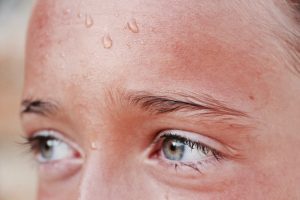
Combine exercise and a hot day, and you get sweat — and lots of it. Sweating is one of the adaptations humans have evolved to maintain homeostasis, or a constant internal environment. When sweat evaporates from the skin, it uses up some of the excess heat energy on the skin, thus helping to reduce the body's temperature. Humans are among the sweatiest of all species, with a fine-tuned ability to maintain a steady internal temperature, even at very high outside temperatures.
Unifying Principles of Biology
All living things have mechanisms for homeostasis. Homeostasis is one of four basic principles or theories that explain the structure and function of all species (including our own). Whether biologists are interested in ancient life, the life of bacteria, or how humans could live on Mars, they base their understanding of biology on these unifying principles:
Cell Theory
According to cell theory, all living things are made of cells, and living cells come only from other living cells. Each living thing begins life as a single cell. Some living things, including bacteria, remain single-celled. Other living things, including plants and animals, grow and develop into many cells. Your own body is made up of an amazing 100 trillion cells. But even you — like all other living things — began life as a single cell.
Watch this TED-Ed video about the origin of cell theory:
https://www.youtube.com/watch?v=4OpBylwH9DU
The Wacky History of Cell Theory - Lauren Royal-Woods, TED-Ed, 2012
Gene Theory
Gene theory is the idea that the characteristics of living things are controlled by genes, which are passed from parents to their offspring. Genes are located on larger structures called chromosomes. Chromosomes are found inside every cell, and they consist of molecules of DNA (deoxyribonucleic acid). Those molecules of DNA are encoded with instructions that "tell" cells how to behave.
Homeostasis
Homeostasis, or the condition in which a system is maintained in a more-or-less steady state, is a characteristic of individual living things, like the human ability to sweat. Homeostasis also applies to the entire biosphere, wherever life is found on Earth. Consider the concentration of oxygen in Earth's atmosphere. Oxygen makes up 21 per cent of the atmosphere, and this concentration is fairly constant. What maintains this homeostasis in the atmosphere? The answer is living things.
Most living things need oxygen to survive, so they remove oxygen from the air. On the other hand, many living things, including plants, give off oxygen when they convert carbon dioxide and water to food in the process of photosynthesis. These two processes balance out so the air maintains a constant level of oxygen.
Evolutionary Theory
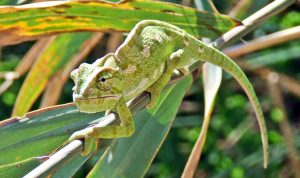
Evolution is a change in the characteristics of populations of living things over time. Evolution can occur by a process called natural selection, which results from random genetic mutations in a population. If these mutations lead to changes that allow the living things to better survive, then their chances of surviving and reproducing in a given environment increase. They will then pass more genes to the next generation. Over many generations, this can lead to major changes in the characteristics of those living things. Evolution explains how living things are changing today, as well as how modern living things descended from ancient life forms that no longer exist on Earth.
Traits that help living things survive and reproduce in a given environment are called adaptations. You can see an obvious adaptation in the image below. The chameleon is famous for its ability to change its colour to match its background as camouflage. Using camouflage, the chameleon can hide in plain sight.
Feature: Myth vs. Reality
Misconceptions about evolution are common. They include the following myths:
Myth |
Reality |
| "Evolution is "just" a theory or educated guess." | Scientists accept evolutionary theory as the best explanation for the diversity of life on Earth because of the large body of scientific evidence supporting it. Like any scientific theory, evolution is a broad, evidence-supported explanation for multiple phenomena. |
| "The theory of evolution explains how life on Earth began." | The theory of evolution explains how life changed on Earth after it began. |
| "The theory of evolution means that humans evolved from apes like those in zoos." | Humans and modern apes both evolved from a common ape-like ancestor millions of years ago. |
2.3 Summary
- Four basic principles or theories unify all fields of biology: cell theory, gene theory, homeostasis, and evolutionary theory.
- According to cell theory, all living things are made of cells and come from other living cells.
- Gene theory states that the characteristics of living things are controlled by genes that pass from parents to offspring.
- All living things strive to maintain internal balance, or homeostasis.
- The characteristics of populations of living things change over time through the process of micro-evolution as organisms acquire adaptations, or traits that better suit them to a given environment.
Use the flashcards below to review the four principles:
2.3 Review Questions
-
- How does sweating help the human body maintain homeostasis?
- Explain cell theory and gene theory.
- Describe an example of homeostasis in the atmosphere.
- Describe how you can apply the concepts of evolution,natural selection, adaptation, and homeostasis to the human ability to sweat.
- Which of the four unifying principles of biology is primarily concerned with:
- how DNA is passed down to offspring?
- how internal balance is maintained?
- _____________ are located on ______________.
- chromosomes; genes
- genes;chromosomes
- genes; traits
- none of the above
- Define an adaptation and give one example.
- Explain how gene theory and evolutionary theory relate to each other.
- Does evolution by natural selection occur within one generation? Why or why not?
- Explain why you think chameleons evolved the ability to change their colour to match their background, as well as how natural selection may have acted on the ancestors of chameleons to produce this adaptation.
2.3 Explore More
https://www.youtube.com/watch?v=Wg5DBH6uMCw&feature=emb_logo
Myths and misconceptions about evolution - Alex Gendler, TEDEd, 2013
Attributions
Figure 2.3.1
Photo(perspiration), by Hans Reniers on Unsplash. is used under the Unsplash license (https://unsplash.com/license).
Figure 2.3.2
Mediterranean Chameleon Reptile Lizard, by user:1588877 on Pixabay, is used under the Pixabay license (https://pixabay.com/de/service/license/).
References
TED-Ed. (2012, June 4). The wacky history of cell theory - Lauren Royal-Woods. YouTube. https://www.youtube.com/watch?v=4OpBylwH9DU&feature=youtu.be
TED-Ed. (2013, July 8). Myths and misconceptions about evolution - Alex Gendler. YouTube. https://www.youtube.com/watch?v=mZt1Gn0R22Q&t=10s
Refers to the relationship between two versions of a gene. Individuals receive two versions of each gene, known as alleles, from each parent. If the alleles of a gene are different, one allele will be expressed; it is the dominant gene. The effect of the other allele, called recessive, is masked.

